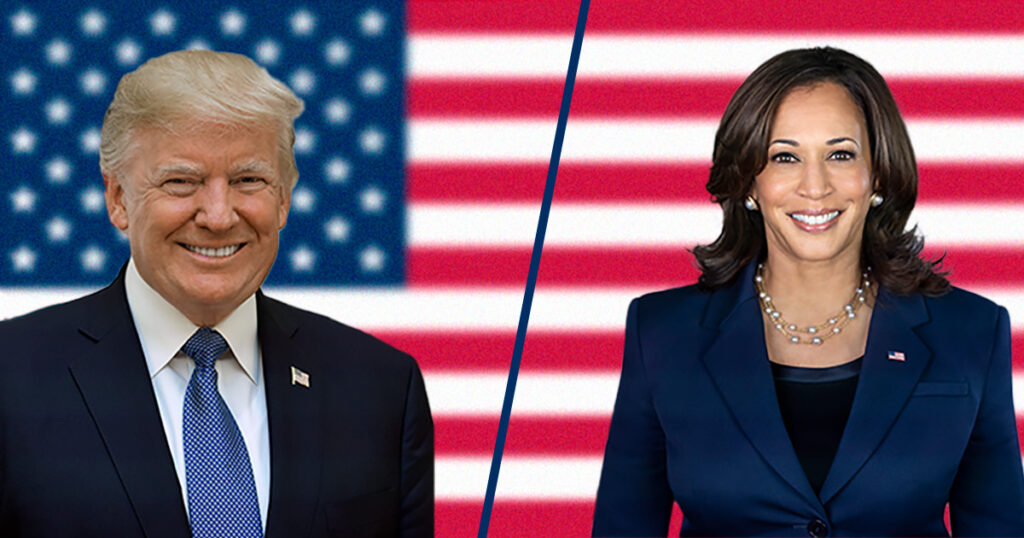Amid growing economic anxieties affecting the lives of Americans, the political proposals of Donald Trump and Kamala Harris offer vastly different directions for the country’s future. The economy has undoubtedly become the primary concern for voters as they approach the polls for this crucial election.
The high inflation of recent years has left a profound impact on the daily lives of citizens. Although inflation has significantly declined since its 40-year peak in 2022, Americans still face a roughly 20% increase in the prices of goods and services compared to pre-pandemic levels, according to Consumer Price Index data. This persistent rise in the cost of living has caused continuous concern and uncertainty, heavily shaping electoral priorities.
Kamala Harris and Donald Trump present contrasting solutions to address these economic challenges. Harris, as vice president, advocates policies aimed at stimulating the economy through investments in infrastructure and education, while promoting a more gradual and balanced approach to controlling inflation and supporting the working class.

On the other hand, Donald Trump, who has previously held the presidency and is a familiar candidate to many voters, proposes a series of economic policies centered around tax cuts, deregulation, and incentives for the private sector. His supporters believe these measures can spur rapid and robust economic growth, though critics warn of the risk of widening inequalities and increasing the public deficit.
As voters prepare to decide the U.S.’s economic future, it is crucial to understand how these proposals could shape the country. A Harris victory could signal a renewed focus on structural reforms and long-term investments, while Trump’s election could lead to a return to market-driven policies and aggressive fiscal reforms. Both scenarios carry significant implications for inflation, economic growth, and financial stability, and the impact of their policies will be felt for years to come.
Meanwhile, the labor market, one of the U.S. economy’s strongest drivers after the pandemic, has recently shown signs of concern. Unemployment is approaching its highest rates in three years, and employers are slowing hiring. The number of available job openings across the economy recently dropped to its lowest level since January 2021, according to Department of Labor data.
In response to Americans’ economic concerns, Vice President Kamala Harris and former President Donald Trump have presented markedly different policy proposals, which are expected to be highlighted during the presidential debate on Tuesday night. These contrasting approaches have the potential to provoke significant changes in the economy – and will have a direct impact on you.
Whether Trump or Harris wins in November, the implications for inflation, employment, and the deficit could be profound. Trump’s trade policy, for example, envisions controversial increases in import taxes on nearly all products entering U.S. ports. While this could generate additional revenue for the government, it could also raise the prices of goods and services for Americans. Economists at Goldman Sachs estimate that each one-percentage-point increase in the effective tariff rate could raise core inflation, as measured by the Personal Consumption Expenditures Price Index, by one-tenth of a percentage point. Trump is considering tariffs of 10% to 20% on most products, except Chinese goods, which would face an even higher tariff of 60%.
Kamala Harris, on the other hand, has warned that the immigration system is “broken,” and her campaign promises to restore the bipartisan border security bill. However, Harris has not committed to mass deportations or a harsh crackdown on immigration, as proposed by Trump.
In response to these differing approaches, Goldman Sachs recently informed its clients that it expects only a “modest additional reduction” in net immigration under a Harris presidency. It is estimated that, with a divided government, the supply of immigrant workers would be 10,000 per month lower if Trump wins, compared to Harris. If Republicans prevail in November, Goldman Sachs projects that the supply of immigrant workers in the U.S. would be 30,000 lower than if Harris assumes the presidency.
Harris has also suggested a plan to build 3 million new housing units. The crucial issue is timing: if the first-time homebuyer credit is implemented before more housing units are available, it could cause home prices to rise even further. “The problem right now is that too many people are chasing too few homes,” explained Justin Wolfers, a professor of public policy and economics at the University of Michigan, in an interview with CNN. “The solution is not simply to give people more money to buy homes. If you don’t fix the supply issue, everyone you help is, in fact, hurting others.”
A significant variable for inflation could be each candidate’s approach to the Federal Reserve, the independent central bank responsible for controlling inflation. Harris has pledged not to interfere with the Fed’s decisions, preserving its independence. In contrast, Trump suggested that the president should have more influence over central bank decisions—a position he later revised.
A budget deficit occurs when the government spends more than it collects in revenue. Currently, the U.S. government is facing a budget deficit of $1.5 trillion, according to the latest Treasury Department data. The nonpartisan Penn-Wharton Budget Model projects that this deficit could rise to $2.1 trillion by 2034 if the status quo remains unchanged.
The size of the deficit has significant implications for Americans. As the deficit increases, it becomes riskier to hold U.S. debt, which tends to grow proportionally. In response, the government may be forced to pay higher interest rates to borrow, which could reduce the amount of investment in other government programs.
Furthermore, higher interest rates on public debt, usually issued in Treasury bonds and notes, could raise borrowing costs for American citizens. This is because market interest rates are often tied to the rates paid to invest in public debt.
Donald Trump’s proposed fiscal policies could substantially limit government revenue. Among these proposals is the permanent extension of individual and corporate provisions of the Tax Cuts and Jobs Act, which is set to expire next year. This would keep the maximum tax rate for individuals at 37%, instead of the 39.6% rate prior to its implementation.
Trump also suggests lowering the corporate tax rate to 15%, down from the current 21%, for companies that produce goods domestically, as well as eliminating taxes on Social Security benefits for seniors and tips for service providers.
Although Trump has stated he plans to fund these initiatives through tariffs, the revenue generated by these tariffs would not be sufficient to cover the total loss of tax revenue. The Penn-Wharton Budget Model, which does not take into account Trump’s new proposals from last week or the elimination of tip taxes, estimates that his proposals could increase the deficit by an additional $5.8 trillion over the next 10 years.
Meanwhile, Kamala Harris’s fiscal proposals have so far focused on raising taxes, which could positively impact deficit reduction. For example, Harris has endorsed raising the top individual income tax rate to 44.6% and increasing the top long-term capital gains tax rate to 28%, up from the current 20%. In the corporate sector, she favors raising the tax rate to 28%.
However, the additional revenue the government could collect from these measures could be offset by the large tax credits Harris has proposed. These credits include expanding the child tax credit and offering a $25,000 credit for first-time homebuyers.
Joshua Gotbaum, a visiting scholar in economics at the Brookings Institution, notes that while neither candidate has presented a complete solution to the country’s fiscal crisis, Harris’s proposals could cause significantly less disruption. “What Harris has proposed would create far less mess,” says Gotbaum.

